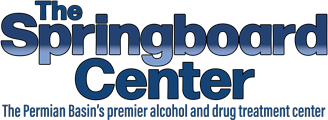Cannabis stores now sell products that promise a “legal high” without explaining the real risks. Two compounds generating serious buzz are delta-8 and delta-9 THC.
These cannabinoids promise different experiences, but many people don’t understand what sets them apart or the real risks involved. Knowing the facts about delta-8 and delta-9 can help you learn more about their addictive properties.
Related: Does Delta 8 Show Up on a Drug Test? Here’s the Honest Answer
What Are the Key Differences Between Delta-8 and Delta-9?
Understanding the core differences between Delta-8 and Delta-9 helps explain why these compounds affect users differently despite coming from the same plant family.
Chemical Structure and Molecular Composition
Delta-8 and Delta-9 THC share nearly identical chemical structures with one crucial difference. Both compounds contain the same atoms arranged in similar patterns.
The key distinction lies in the placement of a single double bond within their molecular structure.
Delta-9 THC has its double bond on the ninth carbon chain, while Delta-8 places this bond on the eighth carbon. This small structural change significantly alters how each compound interacts with your body’s endocannabinoid system.
Your brain’s CB1 receptors respond differently to each compound because of this molecular variation. Delta-9 binds more strongly to these receptors, creating more intense psychoactive effects. Delta-8’s weaker binding affinity results in milder experiences for most users.
Psychoactive Potency and Intensity Levels
The psychoactive strength varies dramatically between these two compounds. Delta-9 THC produces the classic “high” associated with marijuana use. Users often experience intense euphoria, altered perception, and significant cognitive changes.
Most users describe Delta-8 effects as gentler and more manageable. This reduced intensity doesn’t eliminate impairment but makes the experience feel less overwhelming.
Both compounds still cause significant intoxication. The “milder” nature of Delta-8 sometimes leads people to underestimate its effects. This misconception can result in overconsumption and unexpected impairment levels.
Natural Occurrence and Extraction Methods
Delta-9 THC occurs naturally in high concentrations within marijuana plants. Traditional cannabis cultivation focuses on maximizing Delta-9 content for stronger effects.
Delta-8 exists naturally but in much smaller amounts. Most commercial Delta-8 products require chemical conversion from CBD or Delta-9 THC. This manufacturing process involves acids, solvents, and other chemicals that can leave residues in the final product.
Hemp-derived Delta-8 products flood the market because of legal loopholes. However, the extraction and conversion processes often lack proper oversight, which makes them extremely unsafe not only because of their addictive qualities, but also because of possible contamination.
Where Delta-8 vs. Delta-9 Legal Status Currently Stands

Federal Hemp Farm Bill Classifications
The 2018 Farm Bill legalized hemp-derived products containing less than 0.3% Delta-9 THC. This legislation created a legal gray area for Delta-8 products derived from hemp. Many manufacturers argue Delta-8 falls under hemp protections since it’s not specifically prohibited.
Delta-9 THC remains federally illegal outside of licensed medical and recreational programs. Products exceeding 0.3% Delta-9 THC are classified as marijuana, not hemp. This classification creates federal criminal penalties for possession and distribution.
State-by-State Regulation Differences
Individual states create their own rules about Delta-8 vs. delta-9 legal status, leading to a patchwork of different laws. Some states explicitly ban all THC products, including Delta-8. Others allow Delta-8 while maintaining strict controls on Delta-9.
States with legal marijuana programs typically regulate both compounds similarly. These states may permit Delta-8 and Delta-9 sales through licensed dispensaries with age restrictions and testing requirements.
Why Delta-8 and Delta-9 Safety Concerns Matter
Both compounds carry significant Delta-8 and Delta-9 safety risks that users often underestimate, including being extremely addictive.
Unregulated Product Quality and Contamination
The rapid growth of the Delta-8 market has led to minimal quality control standards. Many products contain harmful contaminants from the extraction and conversion processes. Heavy metals, residual solvents, and pesticides frequently appear in unregulated products.
Mislabeling represents another serious concern. Products may contain much higher or lower concentrations than advertised. Some Delta-8 products actually contain significant amounts of Delta-9 THC, creating legal and safety issues.
Third-party lab testing remains inconsistent across the industry. Consumers have limited ways to verify product safety and potency. This lack of regulation puts users at risk for consuming dangerous or ineffective products.
Dependency and Tolerance Development Risks
Both Delta-8 and Delta-9 can lead to physical and psychological dependence with regular use. Your brain adapts to constant THC presence by reducing natural cannabinoid production. This adaptation creates withdrawal symptoms when you stop using the products.
Tolerance develops quickly with either compound. Users need increasingly larger amounts to achieve the same effects. This escalation increases both health risks and financial costs associated with maintaining the habit.
Ultimately, there is no Delta-8 and Delta-9 safety – both are highly addictive and unsafe.
Common Types of Delta-9 THC Edibles on the Market

Delta 8 And Delta 9
The widespread availability of Delta-9 THC edibles creates serious public health concerns. These unregulated or poorly regulated products pose significant risks to users and their families. Understanding these dangerous substances can help you recognize when someone needs professional help.
Traditional Gummies and Chocolates
Delta-9 THC edibles and gummies and chocolates deliberately target users with appealing packaging that often resembles regular candy. This creates extreme dangers, especially for children who may accidentally consume these toxic substances. The unpredictable potency of these products leads to frequent overdoses and emergency room visits.
These products contain highly addictive compounds that alter brain chemistry and create psychological dependence. Many users report being unable to function without regular consumption. The sweet taste masks the dangerous nature of these substances, making it easier for addiction to develop without users recognizing the problem.
The manufacturing of these products lacks proper safety oversight in many areas. Contamination with pesticides, heavy metals, and other toxic substances puts users at additional risk for serious health complications.
Beverages and Drink Mixes
Cannabis beverages represent a dangerous trend in Delta-9 THC products that pose serious health risks. These products include sodas, teas, coffees, and alcoholic alternatives that can lead to addiction and dependency. Nano-emulsification technology creates faster onset times, increasing the risk of accidental overdose and dangerous impairment.
Drink mixes allow users to add THC to their preferred beverages, making it easier to consume dangerous amounts without realizing it. Powder and liquid concentrates can be mixed with water, juice, or other drinks, creating unpredictable dosing situations. Some products are designed to be flavorless, making accidental consumption more likely and increasing overdose risks.
Baked Goods and Infused Foods
Cannabis-infused baked goods create significant dangers through delayed effects and inconsistent dosing. Cookies, brownies, and pastries mask the taste of THC, leading users to consume dangerous amounts before feeling effects. Savory options like crackers, chips, and meal components make it even easier to accidentally overconsume these addictive substances.
Restaurant partnerships in some states normalize dangerous cannabis consumption through high-end dining experiences. These products demonstrate how the cannabis industry markets addictive substances as sophisticated lifestyle choices. The delayed onset of edibles frequently leads to overconsumption, emergency room visits, and severe psychological distress.
Cannabis use disorder is a real and serious condition that affects millions of Americans. Regular use of any THC products, including edibles, can lead to physical dependence, tolerance, and addiction. The convenience and palatability of edible cannabis products make them particularly dangerous for developing problematic use patterns.
The Springboard Center provides comprehensive support for individuals struggling with cannabis use disorders. Our evidence-based treatment approaches help people break free from cannabis addiction and rebuild their lives without substance dependence.
Find Recovery Support at The Springboard Center
If Delta-8 and Delta-9 use has become concerning in your life or a loved one’s life, professional help is available.
Our compassionate team provides evidence-based treatment without judgment, focusing on your complete healing and long-term recovery. We offer comprehensive programs including individual counseling, group support, and family involvement to address the root causes of substance use.
Recovery is possible, and taking the first step toward help demonstrates incredible strength. Contact us today to learn how our proven approach can help you or your loved one find freedom from cannabis dependence and build a healthier, more fulfilling life.




